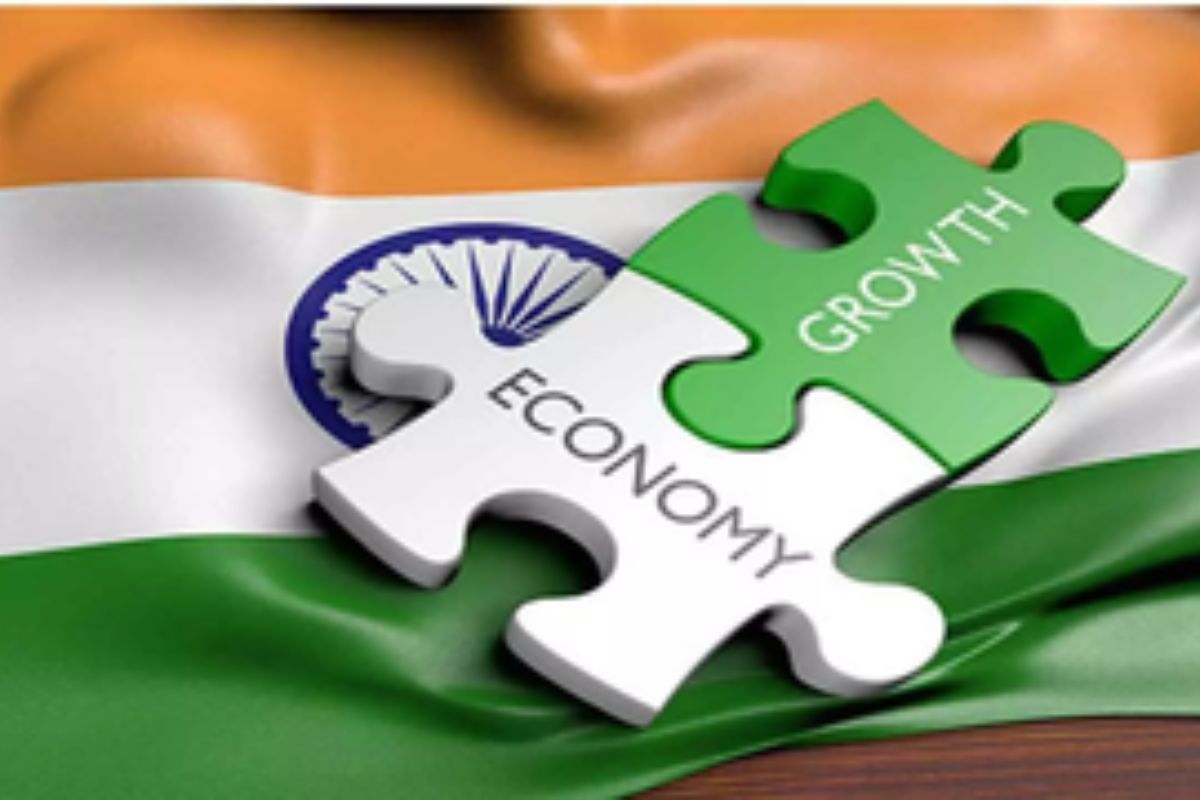Resilient Growth
India’s economic outlook remains resilient, but it’s clear that a complex interplay of global and domestic pressures demands careful navigation.
India’s economic performance in the April-June quarter, though slightly below expectations, continues to demonstrate the resilience that has positioned it as the world’s fastest-growing major economy. With a GDP growth of 6.7 per cent year-on-year, India outpaced China’s 4.7 per cent growth during the same period.

Representative Picture (IANS)
India’s economic performance in the April-June quarter, though slightly below expectations, continues to demonstrate the resilience that has positioned it as the world’s fastest-growing major economy. With a GDP growth of 6.7 per cent year-on-year, India outpaced China’s 4.7 per cent growth during the same period. Despite the deceleration from the previous quarter’s 7.8 per cent, the Indian economy’s ability to maintain such momentum in a challenging global environment deserves recognition.
However, this performance also raises questions about sustainability and inclusivity, particularly concerning job creation and the broader impact on the population. One of the notable aspects of this quarter’s performance is the slowdown in government spending, which fell by 0.2 per cent year-on-year, contrasting with the 0.9 per cent rise in the previous quarter. This decline is partly attributed to the quarter coinciding with the Lok Sabha elections. The reduction in government expenditure had a dampening effect on overall growth, indicating the significant role that public spending plays in sustaining economic momentum. Moving forward, the government’s renewed focus on boosting the economy postelections will be crucial in driving further growth, especially in rural areas where demand remains a key factor.
Manufacturing, a critical component of India’s GDP, grew by 7 per cent year-on-year, down from 8.9 per cent in the previous quarter. While this growth is commendable, the sector’s slowdown highlights the need for more robust policies that can sustain and potentially accelerate industrial expansion. Manufacturing is pivotal for job creation, and any stagnation in this sector could exacerbate the unemployment issue that continues to plague the country. The government must prioritise initiatives that enhance productivity, attract investments, and encourage technological advancements in this sector to ensure longterm growth and employment generation.
Advertisement
Agriculture, often seen as the backbone of the Indian economy, recorded a 2 per cent growth in this quarter, a noticeable improvement from the previous quarter’s 1.1 per cent, but significantly lower than the same period last year. This uptick is a positive sign for rural incomes and consumer demand. However, the agricultural sector’s growth, while vital, remains insufficient to address the broader challenges of rural distress. Increasing agricultural productivity and ensuring better price realisation for farmers must be at the forefront of policy discussions to create a more sustainable and prosperous rural economy. The challenges of job creation and inclusive growth cannot be overstated. While consumer spending and capital investments have shown positive trends, the benefits of economic growth must be more evenly distributed.
The government’s focus on rural jobs and affordable housing, as highlighted in the recent budget, is a step in the right direction. However, more needs to be done to ensure that growth translates into tangible improvements in living standards for all segments of the population. With the right mix of policies focusing on rural development, manufacturing, and job creation, India can continue to build on its impressive growth trajectory and ensure that the benefits are felt by all sections of society
Advertisement